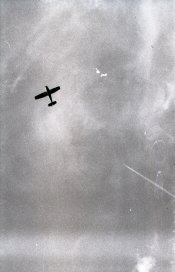These are some shots from my Zenit E. When I got it I had to tension the rear curtain a little to get it to close fully, but of course it still needs calibration, and I've noticed these B/W shots show uneven exposure.
These are the only shots where the unevenness is visible. Now, obviously, this shows up much less on color negative film, and the bulk of what I put through the camera up to this point was Fujicolor, so that's one reason I haven't noticed it until now. I also think this is probably at 1/250th or 1/125th, since most of the roll was shot at 1/500th and shows no defects.
What's going on and which curtain should I adjust to try and reduce this? I do have a CRT TV somewhere that I can look through the shutter at, but I'd still like an expert's advice.
As an aside, we've had the negativity thread about the Zenits already, so I don't want to get bogged down in that... a lot of you had bad experiences with this model or related models, but this one seems well made and the overall track record of the model is not what's at issue here.
The camera was right side up for both of these pictures.
EDIT: it would help if I uploaded the files!
These are the only shots where the unevenness is visible. Now, obviously, this shows up much less on color negative film, and the bulk of what I put through the camera up to this point was Fujicolor, so that's one reason I haven't noticed it until now. I also think this is probably at 1/250th or 1/125th, since most of the roll was shot at 1/500th and shows no defects.
What's going on and which curtain should I adjust to try and reduce this? I do have a CRT TV somewhere that I can look through the shutter at, but I'd still like an expert's advice.
As an aside, we've had the negativity thread about the Zenits already, so I don't want to get bogged down in that... a lot of you had bad experiences with this model or related models, but this one seems well made and the overall track record of the model is not what's at issue here.
The camera was right side up for both of these pictures.
EDIT: it would help if I uploaded the files!












